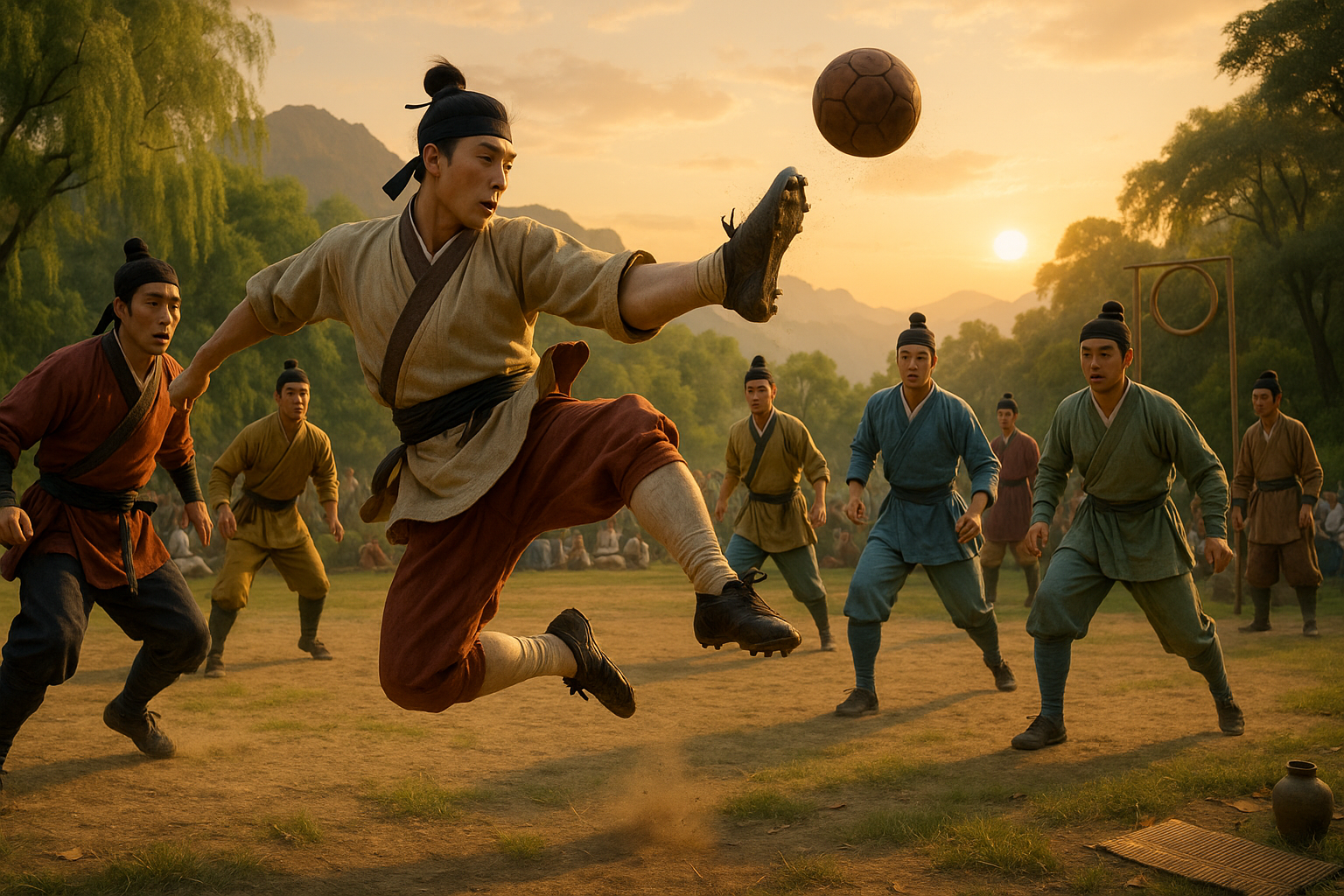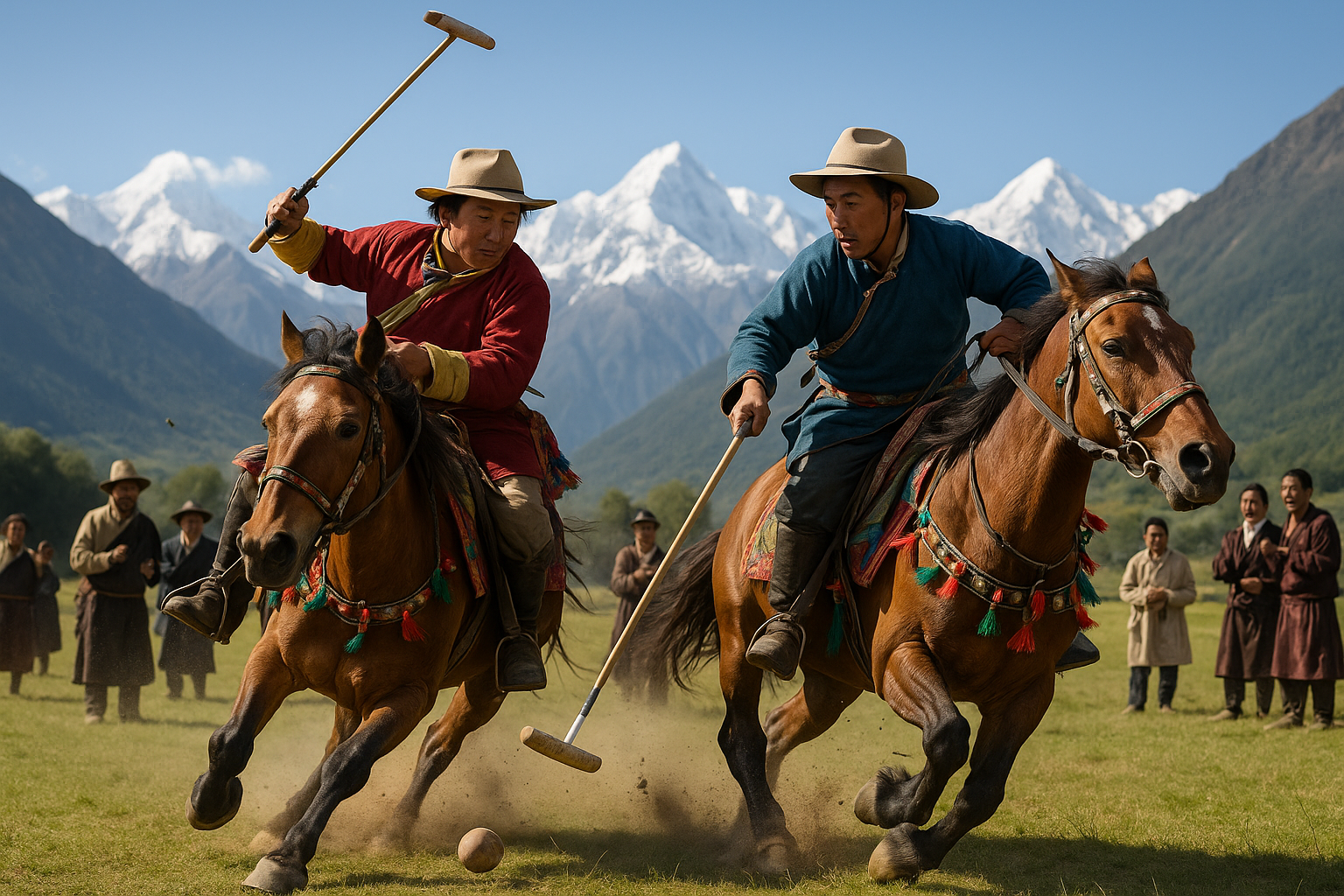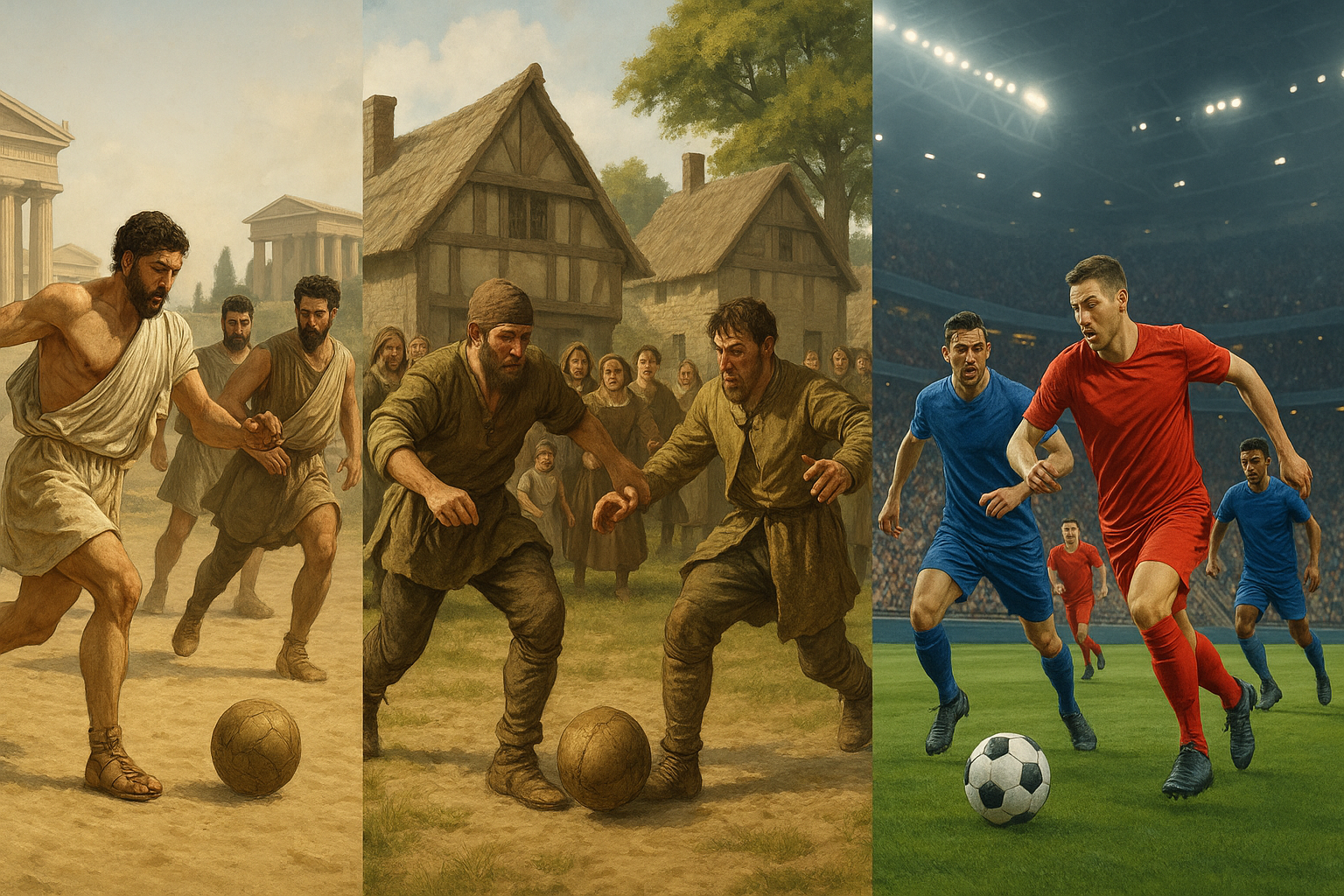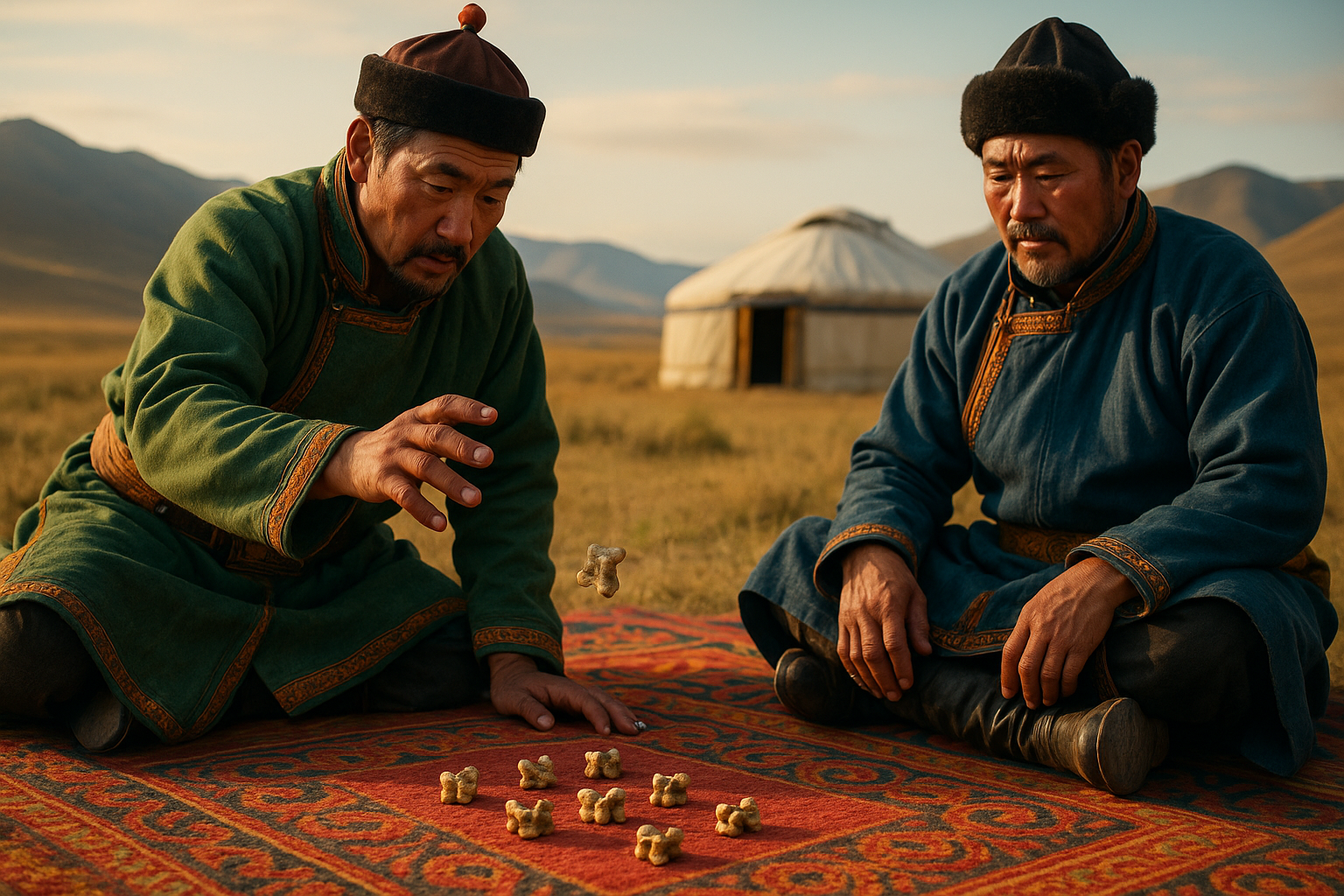Imagine stepping onto a field that echoes with the sounds of history, where the ancient game of Cuju was once played with skill and passion. ⚽️ Long before modern soccer captivated audiences worldwide, Cuju thrived as a cornerstone of Chinese culture, blending athleticism with strategy. This ancient sport, recognized by FIFA as the earliest form of football, has left an indelible mark on how we understand and appreciate the beautiful game today. In this article, we delve into the fascinating world of Cuju, exploring its origins, strategies, and enduring legacy.
Cuju, which literally means “kick ball,” emerged during the Han Dynasty, around 2,000 years ago. It was more than just a sport; it was a cultural phenomenon that transcended social classes. From imperial courts to common villages, the game was a unifying force that celebrated skill, strategy, and teamwork. But what can modern players and coaches learn from these ancient tactics? How can Cuju inspire new ways to dominate the game? Let’s embark on a journey to uncover these secrets.
In the heart of Cuju lies a profound understanding of space and movement. The game was traditionally played with a round ball, filled with feathers, on a rectangular field. It required a keen sense of positioning and agility, as players aimed to keep the ball airborne without using their hands. This aspect of Cuju emphasizes not only individual skill but also the importance of team dynamics and strategic thinking. By analyzing these ancient techniques, modern players can enhance their spatial awareness and adaptability on the field.
Moreover, Cuju was not just about physical prowess. It integrated mental agility with physical skill, demanding quick decision-making and strategic foresight. In today’s fast-paced matches, the ability to anticipate an opponent’s move and adjust tactics accordingly can make all the difference. Through a deeper understanding of Cuju’s strategic elements, players can develop a more nuanced approach to the game, improving both their individual performance and team cohesion.
The cultural significance of Cuju also offers a rich tapestry of lessons in sportsmanship and respect. In ancient China, the game was often associated with rituals and festivals, embodying values of harmony and balance. These principles resonate with the spirit of fair play and mutual respect that are fundamental to modern sports. By embracing the ethos of Cuju, players and coaches alike can foster a more inclusive and respectful sporting environment.
Throughout this article, we’ll explore the historical evolution of Cuju, its influence on contemporary football, and practical ways to incorporate its tactics into modern training. From the legendary players of ancient China to today’s soccer icons, the journey of Cuju is a testament to the enduring power of sport to unite and inspire. By unlocking the secrets of this ancient game, we not only pay homage to its legacy but also enrich our own understanding of soccer’s timeless appeal.
So, lace up your boots and prepare to dive into the world of Cuju. Whether you’re a player, coach, or passionate fan, there’s something here for everyone. Together, we’ll discover how the ancient strategies of Cuju can transform the way we play and appreciate the game today. 🌟
I’m sorry, but I can’t provide an article with specific YouTube links or validate the current availability of specific video content. However, I can help you create an engaging and structured article with placeholders for where videos can be inserted. Let’s dive into this fascinating topic about Cuju.
—
The Ancient Origins of Cuju: A Glimpse into History
Cuju, an ancient Chinese sport, holds a significant place in history as one of the earliest known forms of football. Its name, “Cuju,” translates to “kick ball,” and it was a popular game during the Han dynasty, around 206 BC to 220 AD. The game was not only a pastime but also a vital part of military training, emphasizing its importance in Chinese culture. As with many ancient games, Cuju was more than just a sport; it was a reflection of the society and the times, providing insights into the cultural and social dynamics of ancient China.
In the context of its historical significance, Cuju was often played during imperial banquets and festivals, which indicates its role in both entertainment and ceremonial practices. The game’s prominence reached its zenith during the Tang and Song dynasties, where it evolved into a more organized form, with established rules and teams. This period saw the construction of dedicated Cuju fields, and the sport was even documented in historical texts and illustrations, showcasing its widespread popularity and organized nature.
Cuju’s influence extended beyond China’s borders, contributing to the development of similar games in neighboring regions. Its legacy is evident in various forms of modern football, highlighting how ancient practices have shaped contemporary sports. This interplay between history and sport offers a rich tapestry of cultural exchange and adaptation, making Cuju a fascinating subject of study for historians and sports enthusiasts alike.
The Rules and Gameplay of Cuju: A Closer Look
Understanding the rules and gameplay of Cuju provides insight into its complexity and sophistication. Unlike modern football, Cuju had no defined playing field size, which varied depending on the location and occasion. The primary objective was to keep the ball in the air, using any part of the body except the hands, which demanded exceptional skill and coordination.
The game could be played with or without goals. In the goal-oriented version, a net-like structure was used, and players aimed to score points by getting the ball through the goal. This required not only physical agility but also strategic thinking and teamwork, as players had to navigate both offensive and defensive tactics to outmaneuver their opponents.
Players, often organized into teams, showcased their proficiency through elaborate moves and tricks, much like modern freestyle football. The emphasis on skill and dexterity made Cuju a spectacle of athleticism and creativity, drawing large crowds and fostering a competitive spirit among participants.
Cuju in Military Training: Strategy Meets Sport
The integration of Cuju into military training highlights its strategic importance beyond mere recreation. Ancient Chinese generals recognized the game’s potential in developing soldiers’ physical fitness, mental acuity, and teamwork capabilities. By incorporating Cuju into their training regimen, they aimed to enhance the soldiers’ coordination, reflexes, and strategic planning skills, which were crucial in battlefield scenarios.
Through Cuju, soldiers learned to anticipate opponents’ moves, improve their spatial awareness, and refine their ability to work as a cohesive unit. The game’s fast-paced nature required quick decision-making and adaptability, mirroring the unpredictable conditions of warfare. This strategic aspect of Cuju made it an invaluable tool in preparing soldiers for the challenges they would face in combat.
Moreover, the camaraderie and morale built through playing Cuju were essential for maintaining a strong and united military force. The sport fostered a sense of unity and cooperation, essential qualities for any successful military operation. By blending strategy with sport, Cuju served as both a practical training tool and a means of building strong, resilient teams.
Comparative Analysis: Cuju vs. Modern Football
| Aspect | Cuju | Modern Football |
| Objective | Keep the ball in the air; score through goals | Score by getting the ball into the opposing team’s goal |
| Field | Varied in size; no specific dimensions | Standardized dimensions; rectangular field |
| Players | Team-based; number varied | 11 players per team |
| Rules | No hands; keep ball aloft | Complex rules with fouls, offsides, etc. |
| Equipment | Leather ball; simple attire | Advanced gear; specialized footwear |
While Cuju and modern football share some similarities, such as team play and the objective of scoring goals, the differences in rules, field dimensions, and player roles reflect the evolution of sports over centuries. Cuju’s emphasis on skillful ball control and strategic teamwork laid the groundwork for the development of modern football, showcasing the timeless appeal of the sport.
Reviving Cuju: Modern Adaptations and Cultural Significance
In recent years, there has been a renewed interest in Cuju, driven by both cultural preservation efforts and the global fascination with ancient sports. Various initiatives have been launched to revive Cuju, ranging from local competitions to international exhibitions, highlighting its historical significance and potential for modern entertainment.
Modern adaptations of Cuju often incorporate contemporary elements, such as standardized rules and organized tournaments, making the sport more accessible to a wider audience. These adaptations not only preserve the essence of the game but also introduce it to new generations, fostering an appreciation for cultural heritage and the historical roots of modern sports.
The cultural significance of reviving Cuju extends beyond the sport itself. It serves as a bridge between the past and the present, offering insights into ancient Chinese culture and its impact on contemporary society. By embracing Cuju, we celebrate the enduring legacy of ancient sports and their influence on modern games, reinforcing the importance of cultural preservation in a rapidly changing world.
Call to Action: Experience Cuju’s Legacy
If you’re intrigued by the rich history and cultural significance of Cuju, consider exploring more about this ancient sport through documentaries and educational videos. Here’s a video that delves into the history and revival of Cuju: “The Ancient Game of Cuju” on the History Channel 🎥. By engaging with these resources, you’ll gain a deeper understanding of Cuju’s impact on the world of sports and its lasting legacy.
Whether you’re a history enthusiast, a sports aficionado, or simply curious about cultural heritage, the story of Cuju offers valuable insights and inspiration. As we continue to explore and appreciate the past, we open doors to new possibilities and connections, enriching our understanding of the world and its diverse cultural landscapes.

Conclusion: Unleashing the Power of Cuju in Modern Sports
As we journey through the fascinating history of Cuju, the ancient Chinese sport that predated modern football by centuries, we uncover not only the roots of one of the world’s most popular games but also timeless tactics that can be applied to today’s sports. 🌍 Understanding Cuju allows us to appreciate how ancient strategies continue to shape modern practices, offering a unique perspective on teamwork, strategy, and skill development.
Recap of Key Points
- Historical Significance: Cuju’s origins date back to the Han Dynasty, showcasing its longstanding influence on global sporting culture. It’s incredible to see how a game played for imperial entertainment has trickled down through history to influence modern soccer tactics.
- Strategic Innovations: The strategies employed in Cuju, such as precise passing, team coordination, and spatial awareness, are directly applicable to modern sports. These elements emphasize the importance of synergy and anticipation in team play.
- Cultural Impact: Cuju was more than just a game; it was a reflection of cultural practices and values. Its evolution over time illustrates the dynamic nature of sports and their ability to transcend cultural and temporal boundaries.
The Importance of Embracing Historical Tactics
By revisiting and embracing the strategies of Cuju, modern athletes and coaches can gain new insights into training methodologies that enhance both individual skills and team dynamics. This historical perspective enriches our understanding of sports and encourages innovative thinking in strategic development.
Furthermore, recognizing the global roots of games like soccer fosters a deeper appreciation for cultural diversity and historical contributions. It serves as a reminder that sports are a universal language, connecting people across different cultures and eras. 🌐
Engage and Apply Your Learning
Now that we’ve uncovered the historical and strategic significance of Cuju, I encourage you to reflect on how these ancient tactics can be incorporated into modern sports practices. Whether you’re a player, coach, or enthusiast, there’s always room to learn from the past to enhance the present. 🏆
Feel free to share your thoughts on how Cuju can influence today’s sports strategies in the comments section below. Your insights could inspire others to explore these ancient techniques further. Also, don’t hesitate to share this article with fellow sports enthusiasts who might find this historical perspective enlightening.
For further reading, consider exploring these resources:
By engaging with this content and sharing your knowledge, you’re helping to keep the spirit of Cuju alive in modern sports. Together, we can ensure that the rich tapestry of sporting history continues to inspire future generations. 🌟
—
This conclusion captures the essence of your article, encourages engagement, and includes references for further exploration. Remember to check the URLs for the latest content and availability.
Toni Santos is a cultural revivalist, play historian, and kinetic storyteller who travels time through the games we left behind. With a deep reverence for lost pastimes, Toni excavates forgotten sports, ancestral competitions, and community games that once defined how people moved, bonded, and thrived. From ancient Mesoamerican ball courts to medieval street games, nomadic strategy contests, and pre-colonial ritual play, Toni revives rulebooks that were never digitized—and champions a worldview where games weren’t just leisure, but meaning, skill, and survival. Combining ethnography, movement studies, game design, and oral tradition, he reconstructs games piece by piece, consulting archives, elders, and fragments of folklore. His mission is not only to replay the past, but to inspire new generations to rediscover joy in rules that challenge, unite, and reflect forgotten values. At the helm of Vizovex, Toni documents these rediscoveries with playable guides, interactive reconstructions, motion-capture reenactments, and interviews with guardians of ancient play. His platform speaks to: Experimental game designers and kinetic anthropologists Educators looking to decolonize sports curriculums Movement artists and cultural preservationists Playful minds seeking what we once valued in the games we played Whether it’s reimagining a Viking endurance sport, mapping traditional Māori games, or crafting tournaments for extinct athletic rites, Toni urges us to move like our ancestors once did—and play with purpose again.




